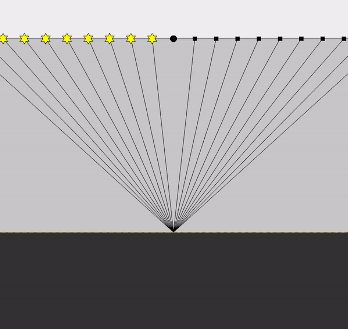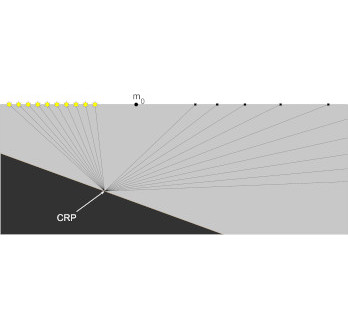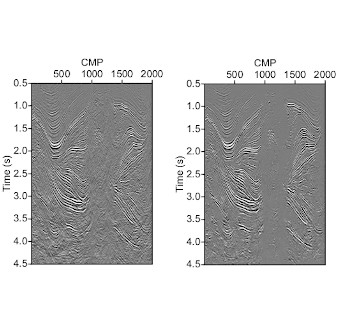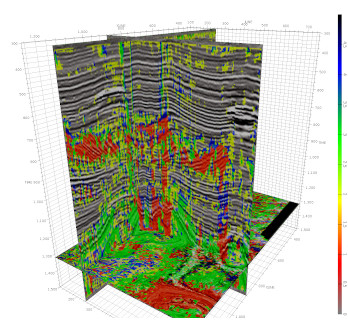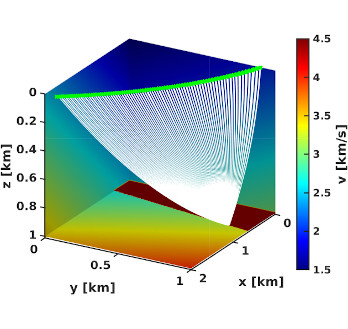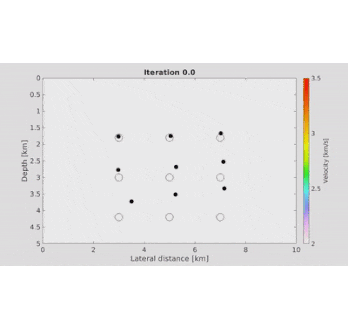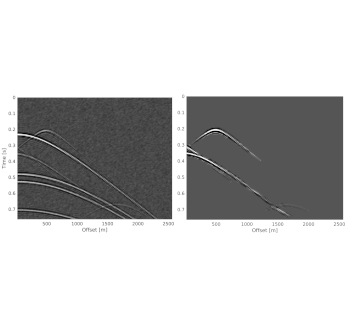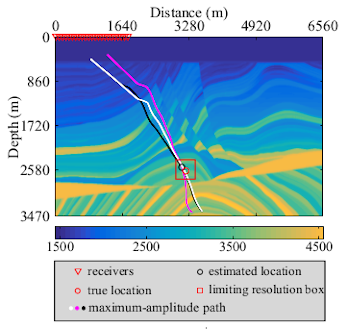Applied Seismics
An important task of geophysics is the investigation of the subsurface, carried out with physics-based methods, in order to obtain information on both the structure of the earth's interior as well as its physical properties. This information has significant value for a large variety of applications. For example, research on the planetary development depends on detailed structural information, as does, e.g., carbon hydrate exploration, CO2 sequestration, or the investigation of potential geothermal energy reservoirs.
While it is possible to obtain such information by drilling boreholes down to depths of several kilometres, such measurements provide only punctual information, while the methods of applied seismics allow to image larger regions, including greater depths, and to extract elastic properties like densities and propagation velocities of elastic waves.
In an active seismic experiment, seismic waves are generated at the earth's surface with 'artificial earthquake sources'. The waves propagate into the subsurface with a velocity that depends on the material. When such a wave encounters a structure where the elastic parameters, e.g., the density or propagation velocity change, a fraction of the wave energy is reflected or scattered. Subsequent processing of the reflection echoes measured at the earth's surface allows to reconstruct an image of the subsurface.
Another important field of work in applied seismics is the investigation of so-called acoustic emissions, earthquakes with very small magnitudes that can be man-made or natural of origin, with seismograph networks with dense coverage. Observation of acoustic emissions is a significant means for the monitoring of the subsurface for potential dangers like sinkhole collapses, landslides, and other tectonic events.
As the structure of the subsurface can be very complex, its reconstruction or the localisation of acoustic emissions can, accordingly, be very demanding. The Applied Seismics group of the Institute of Geophysics at the University of Hamburg has therefore gained international recognition for our development of new methods for seismic subsurface imaging and the localisation and characterisation of acoustic emissions.
In the following, we present our group and a selection of our current research projects:

